Biography
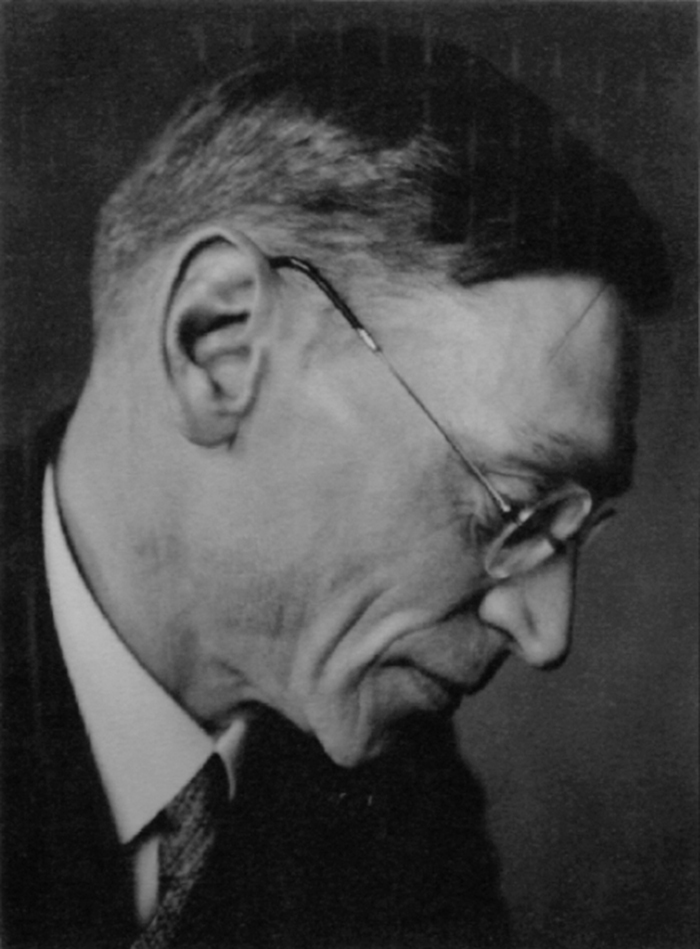
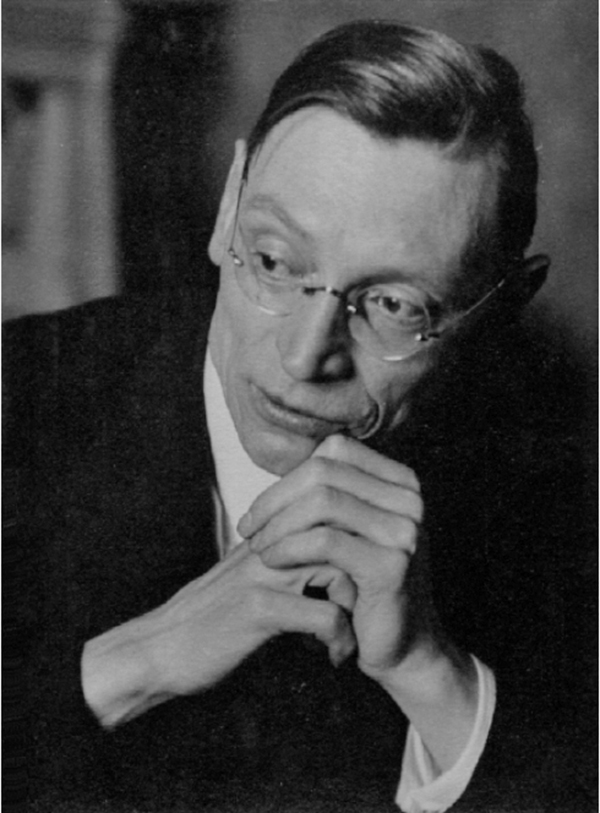
| 1885 | Born on August 9 in Erfurt, the second child of five children of the merchant Franz Ritschl; siblings: an older sister, Lissi, and three younger sisters, Marie, Paula and Gertrud. |
| 1891–1902 | Ritschl attends school in Hannover following his family‘s move to that city; writes his first play, “Afra,“ which he turns over to Hermann- Löns, at the age of 14. |
| 1903 | Basic military training. |
| 1905 | Employment in various offices, followed by work as an office aide at the “Gouvernementsgericht“ (court of the occupation government) in Mainz. |
| 1908 | Employment at the Landesbank Wiesbaden; writes variously, including plays. |
| 1914 | Work as a trainer of civil defense recruits. |
| 1915 | At the age of 30, the author Ritschl witnesses the prem-iere performance of one of his plays at the Thalia-Theater in Hamburg. The manuscript of “Der Rechnungsdirektor, Komödie in drei Akten von Otto Ritschl“ is published- as a director‘s and prompter‘s book by Osterheld & Co., Berlin; marriage to Dora Nötzel; return to employment at the Landesbank Wiesbaden-. |
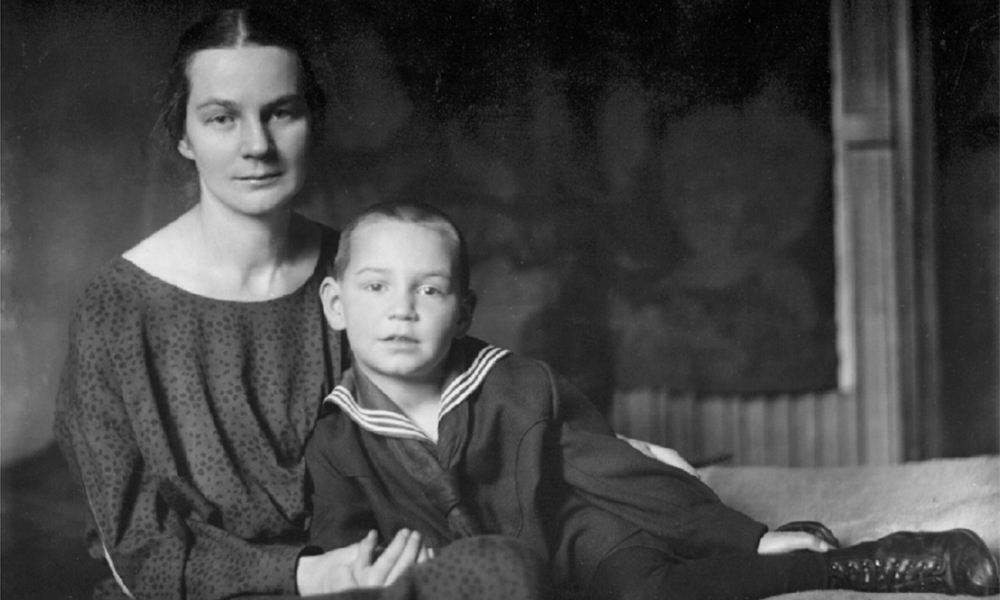
| 1918 | First attempts at painting; birth of his son Helmut. |
| 1919 | Granted a one-year sabbatical from his position at the Landesbank Wiesbaden, allowing him to devote himself more intensively to painting; ceases- writing and destroys his manuscripts; first exhibition of his paintings by the Nassauischer Kunstverein on the premises of the Museum Wiesbaden; first sales of his work; termination of his career as a bank employee; Ritschl begins working exclu-sively as a free-lance artist in Wiesbaden. |
| 1920 | Travel to Dresden and Klotzsche to meet Conrad Felixmüller, who paints his portrait; visit to an exhibition organized by the occupation forces, |
| 1923 | Election as ombudsman for the artists guild of Wiesbaden; contacts with Alexej von Jawlensky, who has been living in Wiesbaden since 1921, and ties of friendship with fellow artists such as the sculptor Arnold Hensler, the painter and architect Edmund Fabri and the painters Wolff Malm and Franz Schaurte. |
| 1924 | Foundation of a business association for artists; Ritschl concerns himself with the art of Georges Braque. |
| 1925 | Participation at the exhibition entitled “Neue Sachlichkeit“ in Mannheim; Ritschl‘s encounter with the works of other participating artists is disappointing and causes him doubts about the possibilities of realistic modes of painting; foundation of the “Freie Künstlerschaft Wiesbaden“; election as Chairman (until 1933); destruction of portions of his previous work. |
| 1926 – 1929 | Several trips to Paris, accompanied in some cases by friends such as Franz Schaurte (other sources mention only a single journey in 1929); stay of several months in the French capital in 1929; visits the art critic Wilhelm Uhde and becomes interested in the work of Ferdinand Léger, in synthetic Cubism and in Surrealism; meets Max Ernst; lec-tures at the Volkshochschule in Wiesbaden towards the end of this period. |

| 1932 | Last exhibition including abstract art shown by the Nassauischer Kunstverein in Wiesbaden, including works by Fritz Winter; Ritschl abandons figural motifs. |
| 1933 | Participation in an exhibition at the Museum Folkwang in Essen. His pic-tures are removed following intervention by the National Socialists; retreat from public exposure and continuation of his work in the isolation of his studio; exchange of aesthetic ideas with Alexej von Jawlensky. |
| 1934 | Ritschl meets Swami Yatiswarananda, who has been living in Wiesbaden as a guest of the Koch family since 1933; studies in the teachings of Vedanta, which continue even after the Swami‘s emigration to Switzerland (St. Moritz, 1935) and eventually to the US (1939). |
| 1937 | Removal of “degenerate art,“ including paintings by Ritschl, from public collections; Ritschl focuses on aspects of cultural history within the context of a book project. |
| 1939 | Employed as an administrative aide at the Finanzamt Wiesbaden (until 1942); Ritschl‘s paintings are packed and stored in his basement. |
| 1941 – 1944 | Preparation of lecture manuscripts on the teachings of Vedanta; Jawlensky dies (1941); Ritschl receives notifica-tion that his son is missing in action (1942); destruction of his studio and three changes of domicile. |
| 1945 | Return to his old, partially destroyed studio; first watercolors and gouaches-. |
| 1946 | Ritschl returns to painting and becomes involved with Picasso‘s work; participation at the “Allgemeine Deutsche Kunstausstellung“ in Dresden; meets Peter Schermuly, who becomes his student-; beginning of Ritschl‘s friendship with Ernst Wilhelm Nay; contacts with Max Ackermann, through whom Ritschl becomes acquainted with the physician and art collector Ottomar Domnick; Ritschl is introduced to the legacy of Adolf Hölzel. |
| 1947 | Exhibition at the home of Ottomar Domnick in Stuttgart as part of a series featuring Baumeister, Ackermann, Winter and Meistermann; an essay by the artist entitled “Creative Values in Abstract Art“ is printed in the exhibition- catalog. |
| 1948 | Membership in the “Rheinische Sezession“ and participa-tion at its first exhibition; controversy over Ritschl‘s work leads to division among the members; participation at the “Salon des Realites Nouvelles“ in Paris. |
| 1949 | Founding member of the “Neue Rheinische Sezession“; Ritschl‘s writings on the history of philosophy are com-piled in a three-volume manuscript (never published). |
| 1950 | Membership in the “Neue Darmstädter Sezession“; membership in the “Westdeutscher Künstlerbund“ and the “Münchner Neue Gruppe.“ |
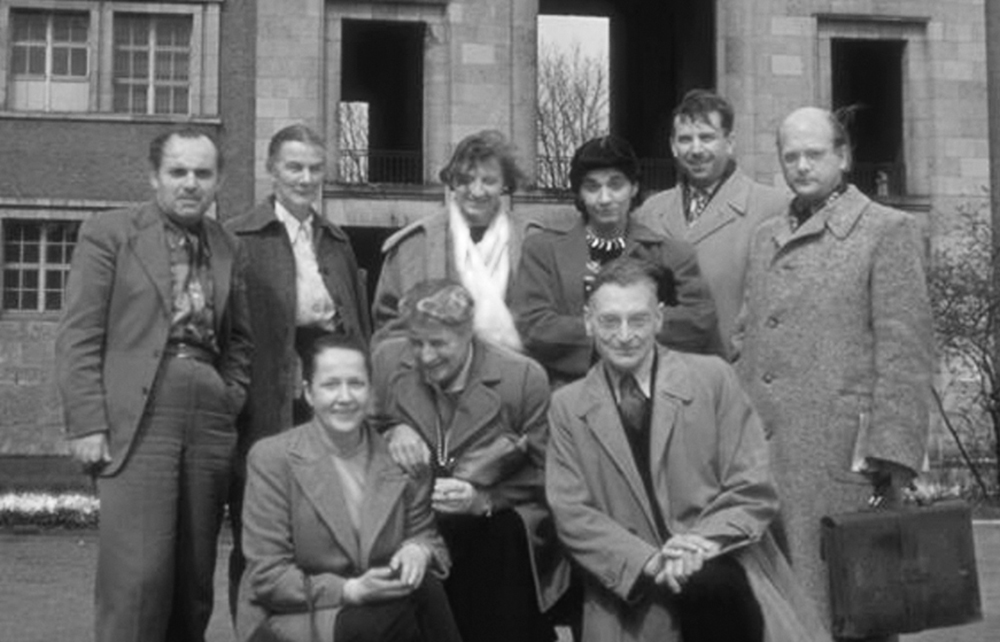
| 1952 | An essay by the artist entitled “Art of our Time“ is printed in the journal “Die Kunst und das schöne Heim“. |
| 1954 | Participation in the “Internationale Sezession“ exhibition at Schloss Morsbroich, Leverkusen; membership in the “Deutscher Künstlerbund“; Ritschl‘s “geometric phase“ begins. |
| 1955 | A major solo exhibition on the occasion of Ritschl‘s 70th birthday at the Neues Museum Wiesbaden; participation in the exhibition organized by the group “ZEN“ in Munich; invitation to participate in the first major interna-tional exhibition of art in Germany, documenta 1 in Kassel; award of the Goethe medal by the State of Hessen. |
| 1958 | Ritschl‘s wife dies. |
| 1959 | Ritschl‘s formal language changes again; completion of a 12-part series of paintings in the spring; recipient of the art prize of the “Künstlerbund“ exhibition; participation in documenta II in Kassel-. |
| 1960 | Ritschl receives the Villa Romana Prize; completion of the fresco in the stairway of the new building housing the Physikalisches Institut at the university in Marburg; Ritschl moves into his newly built house and studio on Schuhmannstraße on the outskirts of Wiesbaden; receives the “Bundesverdienstkreuz – 1. Klasse“ (German Meritorious Service Cross – 1st class). |
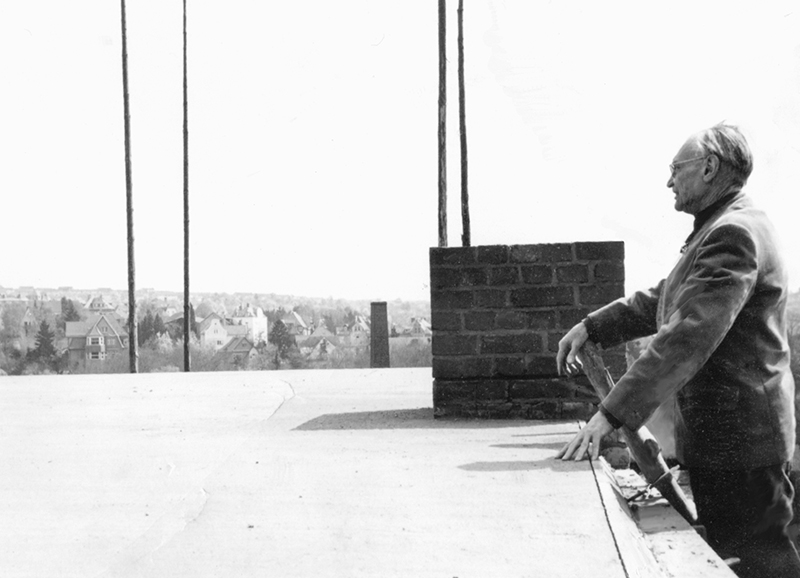
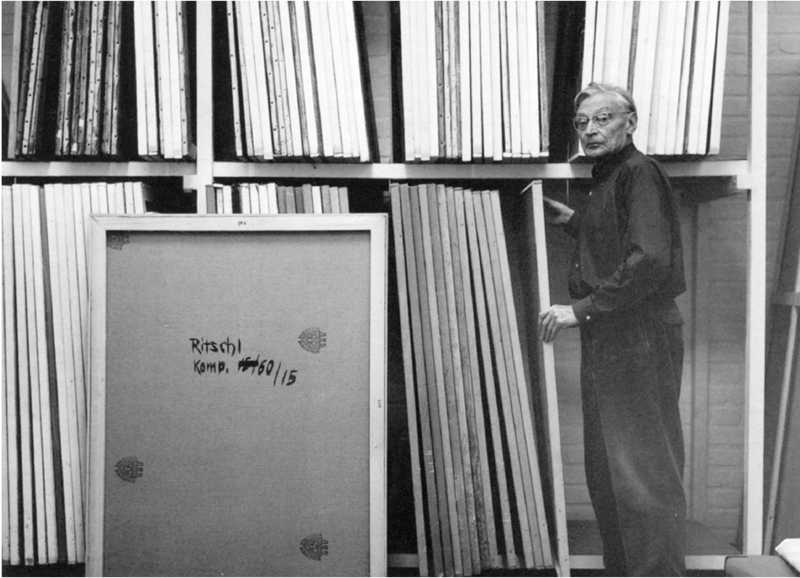
| 1961 | Exhibition on the occasion of Ritschl‘s 75th birthday at the Von-der-Heydt-Museum in Wuppertal; Ritschl donates a large number of paintings to the Kunst- und Museumsverein in Wuppertal-. |
| 1964 | Completion of the fresco for the auditorium at the Landeshaus in Wiesbaden. |
| 1965 | Awarded the medal of honor in gold from the city of Wiesbaden; German television broadcasts a portrait of the artist; exhibition on the occasion of Ritschl‘s 80th birthday at the Mittelrhein-Museum in Koblenz. |
| 1970 | Exhibition in honor of Ritschl‘s 85th birthday at the prem-ises of the “Berufsverband bildender Künstler“ in Munich; the artist writes his “Biographische Notizen“ for the exhi-bition catalog; exhibition at the Mittelrhein-Museum in Koblenz; a monograph containing an illustrated works index edited by Wolff Mirus as weil as interpretative texts on Ritschl‘s pictorial themes by Dr. M. Velte; Ritschl expresses his dissatisfaction with these texts in an explana-tion also published in the catalog; publication of a collection of aphorisms entitled “Der springende Punkt.“ |
| 1970/71 | Work on manuscripts for two plays entitled “Die Meinungsmacher“ and “Der Hexenstein“; Ritschl would publish these three-act plays himself five years later. |
| 1972 | Awarded the “Großes Bundesverdienstkreuz.“ |
| 1973 | A complete works index is published based on the prelim-inary research clone for the Koblenz catalog and edited by Wolff Mirus. |
| 1975 | Receives the “Ehrenplakette“ (Medal of Honor) from the city of Wiesbaden. |
| 1976 | Ritschl dies on July 1 in Wiesbaden. |

